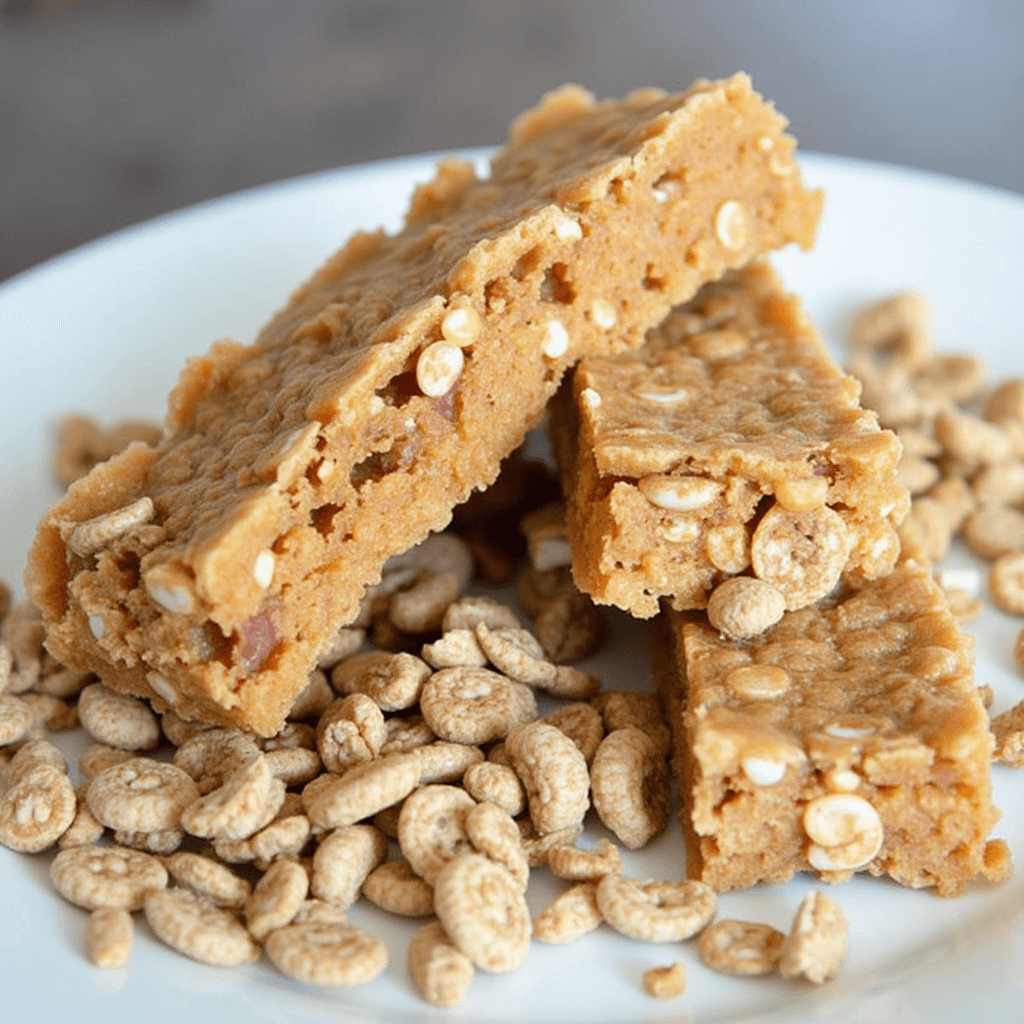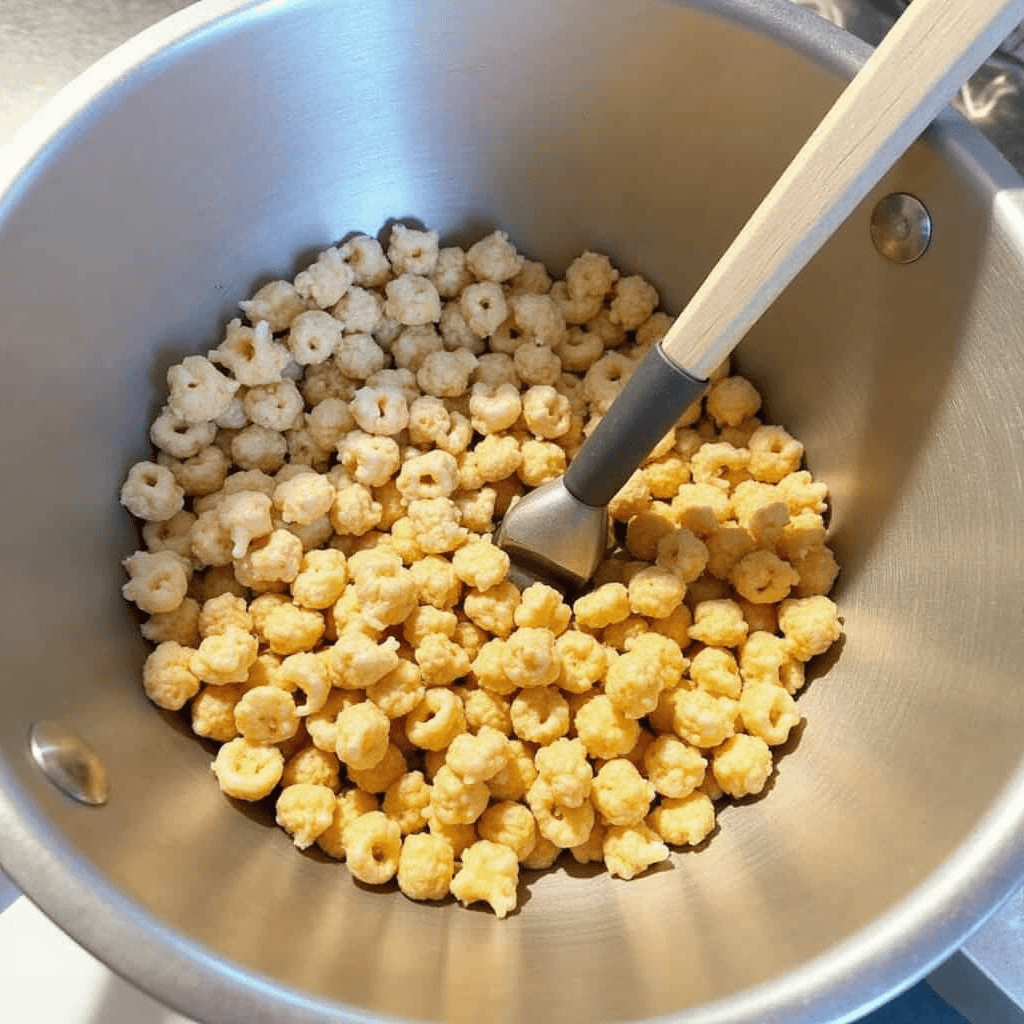Introduction
Cereal bars, also known as barras de cereal, have become a staple snack for health-conscious individuals and busy professionals. These convenient, nutrient-packed bars provide a quick source of energy while offering a variety of flavors and ingredients. Whether you’re looking for a protein boost, a fiber-rich option, or a natural, organic alternative, cereal bars cater to different dietary needs.
In this article, we’ll explore the benefits of cereal bars, their nutritional components, and how to choose the best option for your lifestyle. We’ll also discuss how to make homemade cereal bars, the impact of these snacks on weight management, and their role in fitness and athletic performance. By the end, you’ll have a comprehensive understanding of why cereal bars are a great addition to a balanced diet and how to incorporate them into your daily routine.
The Rise of Cereal Bars: A Healthy Snacking Revolution
Barras de Cereal have gained significant popularity in recent years as a go-to snack for individuals seeking a nutritious yet convenient option. Many people turn to these bars as an alternative to processed junk food, as they offer a more balanced combination of nutrients. Whether consumed before a workout or during a mid-afternoon break, they provide a quick source of energy. Buffalo Wild Wings Salads offer fresh salad options, and so do many cereal bars.
The demand for barras de cereal has expanded due to the increasing focus on health and wellness. Manufacturers continuously introduce new formulations to cater to various dietary preferences, including gluten-free and organic options. As a result, consumers have a wider selection to choose from.
Additionally, the portability of barras de cereal makes them ideal for those with busy schedules. Unlike traditional meals, these snacks require no preparation, making them an easy choice for professionals, athletes, and students alike.
Key Ingredients in Cereal Bars: What Makes Them Nutritious?
The nutritional value of barras de cereal depends largely on their ingredients. High-quality cereal bars contain a blend of natural components that contribute to overall health.
Some essential ingredients include:
- Whole grains: Oats, quinoa, and brown rice provide fiber and complex carbohydrates.
- Nuts and seeds: Almonds, walnuts, chia seeds, and flaxseeds add healthy fats and protein.
- Natural sweeteners: Honey, dates, and maple syrup offer a better alternative to refined sugar.
- Dried fruits: Cranberries, raisins, and apricots enhance flavor and provide essential vitamins.
- Protein sources: Whey protein, pea protein, or egg whites help support muscle growth and satiety.
By selecting barras de cereal with wholesome ingredients, individuals can enjoy a satisfying snack without compromising their dietary goals.
The combination of aloha salads brings a similar approach to fresh, healthy meals, just as cereal bars can help maintain a balanced diet.
Types of Cereal Bars: From Protein to Energy-Boosting Options
There are numerous types of barras de cereal available, each catering to different nutritional needs. Understanding these varieties helps consumers select the best option.
- Protein Bars: Ideal for athletes and fitness enthusiasts, these bars contain high protein content to support muscle recovery.
- Energy Bars: Designed to provide a quick energy boost, they often contain carbohydrates and natural sugars.
- Meal Replacement Bars: Packed with essential nutrients, they serve as an alternative to full meals.
- Low-Calorie Bars: Best suited for weight-conscious individuals, these bars focus on portion control and reduced sugar.
- Vegan and Gluten-Free Bars: Made with plant-based ingredients, these cater to those with dietary restrictions.

The Role of Cereal Bars in Weight Management
Many people integrate barras de cereal into their diet plans as part of a weight management strategy. These snacks help control hunger while providing essential nutrients.
However, not all cereal bars contribute to weight loss. Some contain excessive sugar and unhealthy additives, leading to increased calorie intake. To maintain a balanced diet, consider the following:
Selecting the right barras de cereal ensures that consumers meet their individual health and fitness goals.
- Opt for bars with less than 10 grams of sugar per serving.
- Choose options with high fiber and protein content for sustained satiety.
- Avoid bars containing artificial preservatives and hydrogenated oils.
When used strategically, barras de cereal can be an excellent tool for weight management without sacrificing taste or convenience.
Homemade Cereal Bars: Easy and Healthy Recipes
Creating homemade barras de cereal ensures complete control over ingredients and nutrition. Making them at home is simple and requires minimal effort.
Basic Homemade Cereal Bar Recipe
Ingredients:
- 2 cups rolled oats
- 1/2 cup almond butter
- 1/4 cup honey
- 1/2 cup chopped nuts
- 1/4 cup dried fruit
Instructions:
- Preheat the oven to 350°F (175°C).
- Mix all ingredients in a bowl until well combined.
- Press the mixture into a baking dish.
- Bake for 15 minutes or until golden brown.
- Let cool, then cut into bars.
Homemade barras de cereal are cost-effective, customizable, and free from unnecessary additives.
Are Cereal Bars Good for Kids? A Nutritional Perspective
Parents often wonder if barras de cereal are suitable for children. While many brands offer healthy options, some products contain high levels of sugar and artificial flavors.
When choosing barras de cereal for kids, consider the following:
- Look for bars with whole food ingredients.
- Ensure the sugar content is below 8 grams per serving.
- Avoid products with artificial colorants and sweeteners.
Nutritious cereal bars can serve as an excellent snack for children, providing energy for school and playtime.

The Impact of Cereal Bars on Athletic Performance
Athletes often consume barras de cereal to maintain their energy levels during training and competition. These bars provide a combination of carbohydrates, protein, and healthy fats, which are essential for endurance and recovery.
For optimal performance, athletes should select bars with:
- Balanced macronutrients for sustained energy.
- Minimal processed sugars to prevent energy crashes.
- High protein content to aid muscle repair.
By incorporating the right barras de cereal into their diet, athletes can fuel their bodies efficiently and improve endurance.
Comparing Store-Bought vs. Homemade Cereal Bars
Store-bought and homemade barras de cereal each have their own advantages. While commercial bars offer convenience, they may contain preservatives and added sugars. Homemade bars, on the other hand, allow full control over ingredients. Choosing between the two depends on personal preferences and dietary needs.
The Best Cereal Bars for Specific Diets: Vegan, Keto, and More
Certain barras de cereal cater to specific diets. Vegan options exclude animal products, while keto bars focus on low carbs and high fats. Other bars support paleo, gluten-free, and high-protein diets. Some also offer organic or allergen-free choices. Selecting the right bar ensures compatibility with individual nutritional goals, helping consumers maintain a balanced diet without compromising on taste or convenience.
Hidden Sugars and Additives: What to Watch Out For
Many barras de cereal contain hidden sugars and artificial additives that can reduce their nutritional value. To make healthier choices, it’s essential to read ingredient labels carefully. Opting for bars with natural sweeteners, like honey or maple syrup, helps consumers avoid excess processed sugars, ensuring that their snack remains beneficial and aligned with their health goals. Being mindful of ingredients allows for better-informed decisions when selecting a snack that promotes long-term wellness.
Cereal Bars for Breakfast: A Convenient and Nutritious Option
For those with busy mornings, barras de cereal are a convenient breakfast option. These easy-to-carry snacks offer essential nutrients, allowing individuals to skip meal prep and still enjoy a nutritious start to their day. Ideal for people on the go, they provide quick and satisfying energy without the need for cooking or lengthy preparation, making them a perfect choice for hectic lifestyles.
Sustainability in the Cereal Bar Industry: Eco-Friendly Choices
Sustainable practices in the barras de cereal industry extend beyond packaging and ingredient sourcing. Many companies are investing in reducing their carbon footprint, utilizing renewable energy, and supporting local farmers. By choosing eco-conscious brands, consumers can help foster environmental sustainability, ensuring that their snacks contribute positively to both personal health and the planet’s well-being. Supporting these efforts promotes long-term ecological responsibility while enjoying a nutritious treat.
Future Trends in the Cereal Bar Market
The future of barras de cereal is evolving with new flavors, more nutrient-dense options, and a growing focus on plant-based ingredients. As consumer demand shifts toward healthier and more sustainable snacks, manufacturers are embracing these changes, ensuring that their products meet the needs of modern diets while promoting ecological responsibility. The shift toward natural and innovative ingredients continues to shape the market, offering consumers a wider array of choices that align with both health and sustainability goals.
FAQs:
Cereal Bar
A cereal bar is a compact snack made from grains such as oats, wheat, or rice, often combined with nuts, dried fruits, chocolate, and sweeteners like honey or syrup. These bars are designed to provide quick energy and are commonly consumed as breakfast or an on-the-go snack. Some cereal bars are enriched with protein and fiber, making them a healthier option, while others may contain high sugar and fat. They are available in various flavors and textures, from crunchy to chewy. Homemade versions allow for better control over ingredients, reducing unnecessary additives. Choosing cereal bars with natural ingredients and balanced nutrition can make them a convenient and healthy addition to a daily diet when eaten in moderation.
Quaker
Quaker is a well-known brand specializing in oat-based products, including cereal bars, oatmeal, and snacks. Founded in 1877, Quaker has become a global name in healthy food options. Quaker cereal bars are available in various flavors, such as chocolate chip, peanut butter, and fruit-filled varieties. They cater to different dietary needs, including high-protein, fiber-rich, and reduced-sugar options. These bars are convenient for busy individuals seeking a nutritious snack or quick breakfast alternative. While some Quaker bars are designed for health-conscious consumers, others may contain added sugars and processed ingredients. Checking the nutritional label helps in selecting a suitable option. Quaker continues to be a trusted brand for those looking for tasty, oat-based snacks with varying health benefits.
How to Make Cereal Bars
Making homemade cereal bars is simple and allows full control over ingredients for a healthier snack. To prepare them, mix two cups of oats or cereal with half a cup of honey and peanut butter, stirring until well combined. Add nuts, dried fruits, or chocolate chips for extra flavor. Press the mixture into a lined baking dish, ensuring it is evenly spread. Refrigerate for at least one hour or until firm. Once set, cut into bars and store in an airtight container. Homemade cereal bars are a great alternative to store-bought options, as they contain fewer preservatives and less added sugar. They provide a nutritious, customizable snack for breakfast or a quick energy boost during the day.
Do Cereal Bars Cause Weight Gain?
Cereal bars can contribute to weight gain if consumed in large quantities or if they contain excessive sugar, unhealthy fats, and calories. Many commercial cereal bars are marketed as healthy but may have high amounts of added sweeteners and processed ingredients, leading to increased calorie intake without substantial satiety. However, choosing bars high in fiber and protein can help control hunger and support a balanced diet. Eating cereal bars in moderation, alongside whole foods like fruits and yogurt, can prevent excessive calorie consumption. To maintain a healthy diet, it is important to read nutritional labels and opt for bars with natural ingredients, minimal added sugars, and healthy fats, ensuring they complement overall dietary needs.
Conclusion
Cereal bars offer a nutrient-dense, convenient, and versatile snack option for people of all ages. Whether you’re looking for a quick breakfast, a post-workout energy boost, or a healthy snack to keep you going throughout the day, there’s a cereal bar to match your needs. However, it’s essential to read ingredient labels carefully to avoid excessive sugar and artificial additives.
Making your own homemade cereal bars allows you to control the ingredients, ensuring a healthier and more personalized option. Additionally, the market is evolving with more eco-friendly and diet-specific choices, catering to vegan, keto, and organic preferences.
By understanding the nutritional aspects, benefits, and potential pitfalls of cereal bars, you can make informed decisions to enhance your diet. With their on-the-go convenience and health benefits, cereal bars will likely remain a popular snack choice for years to come.


